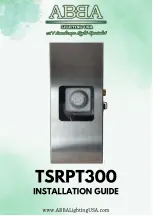
3
INTRODUCING THE
The LINKS1000 Cellular Alarm Transmitter enhances the protection provided by a security system by
providing a reliable backup to the control panel’s normal telephone communications with the monitoring
station. The LINKS1000 works with the DSC Panels described in the Specifications below.
If the control panel is unable to complete an alarm transmission through the normal telephone line, due to any
line problems, the LINKS1000 will be activated and will transmit the alarm communication over the cellular
network. The LINKS1000 works automatically.
The LINKS1000 has been designed for simple and straightforward installation. Wiring connections are made
directly between the LINKS unit and the security control panel. The DSC panels require only minor changes
in their Programming Sections.
The LINKS1000 can only be used as the backup communication channel for fire alarm applications.
For commercial burglary applications, the attack resistant enclosure is required (Model CMC-1 P/N
31000052).
Specifications
Compatible control panels for Commercial Fire Listed application
• DSC PC4010CF software version 3.2 or later
• DSC PC4020CF software version 3.2 or later
Compatible control panels for Commercial Burglary Listed application
• DSC PC5010
• DSC PC4010
• DSC PC4020
Communication Method
• Amps cellular telephone network
RF Power Output
• 3.0 Watts maximum
Antenna
• 3 - 5 dB gain, TNC connector
Battery
• 12 volt 7 Ah minimum rechargeable gel-cell type battery
Transformer
• 16.5 V
AC
, 40 VA
Dimensions
• 11" × 11.8" × 3.3" (279 mm × 300 mm × 84 mm)
Weight
• 6.5 lbs. (3 kg)
IMPORTANT NOTE
A security system cannot prevent emergencies. It is only intended to alert you and, if included, a monitoring
station, of an emergency situation. Security systems are generally very reliable but they may not work under
all conditions and they are not a substitute for prudent security practices or life and property insurance. Your
security system should be installed and serviced by qualified security professionals who should instruct
you on the level of protection that has been provided and on system operations.






































